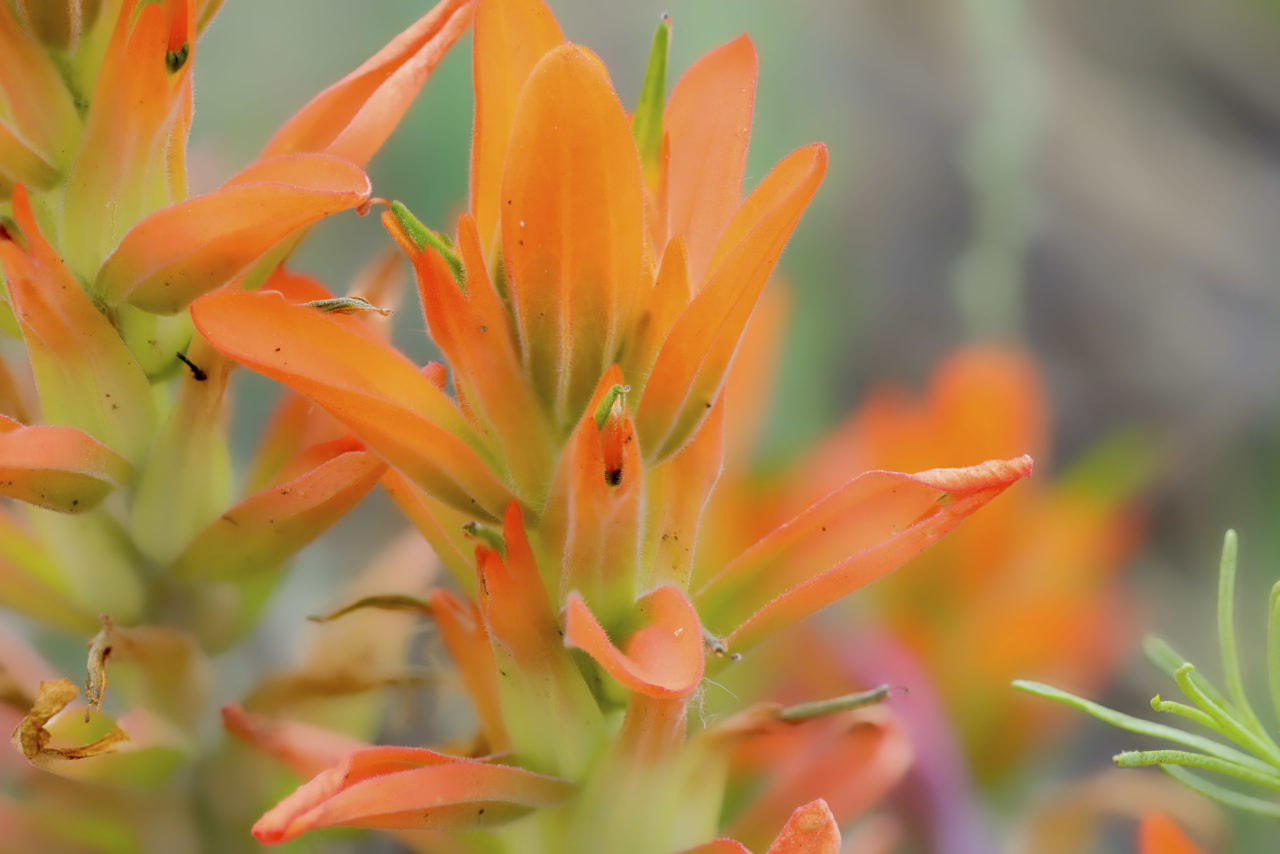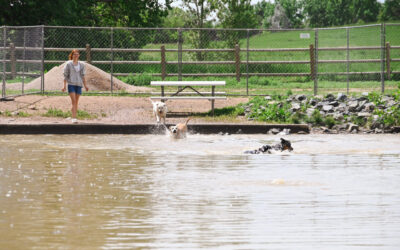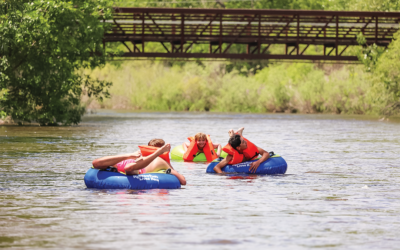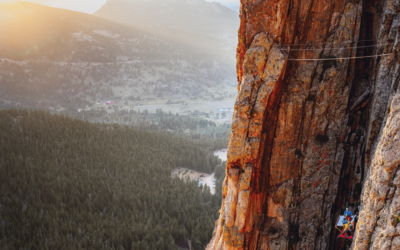Hardy native plants add local color to any landscape
by Kristin Owens
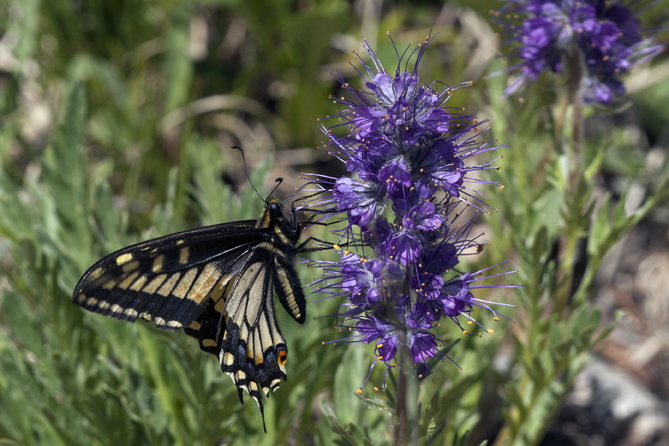
Gayfeathers (Liatris punctate)
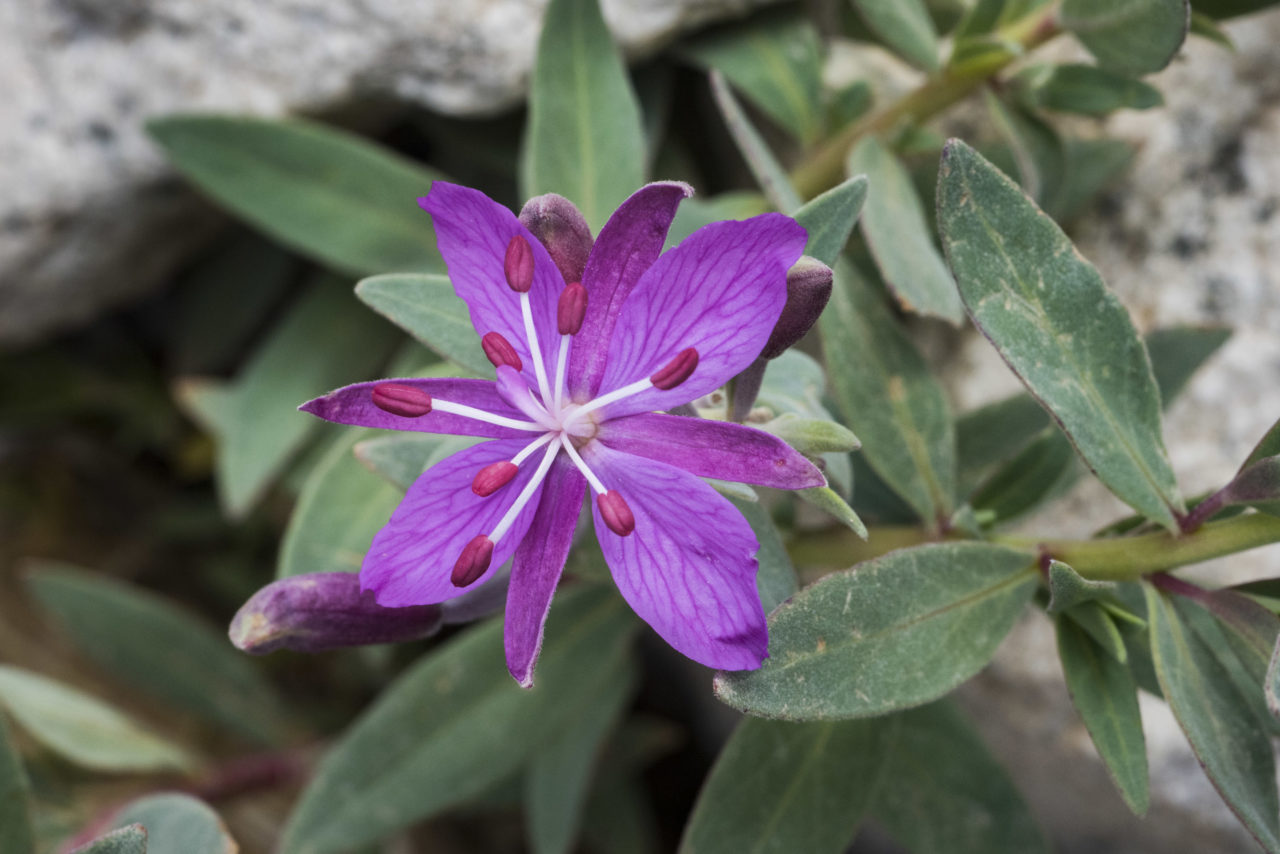
So why does your garden look so pitiful?
Time to take some advice from Mother Nature and get back to basics. All those native plants you see blossoming in the parks and along the trails? Put some of them in your yard, and you could have some lush springtime verdure of your own.
Native plants were here long before we were, so they can prosper without much help from us. They’re naturally adapted to Zone 5b hardiness. They thrive in a three-season western climate. They adore the clay-like substance we call Colorado soil. They tolerate low humidity and skin-cracking dry winds. They’re more resistant to pests than nonnatives, they prohibit the spread of noxious weeds, and they capture the essence of the Centennial State.
Most importantly, native plants are essential to our environment. Whether you’re adding to an existing flower garden or overhauling an entire landscape, consider adding them to the mix. Besides giving you hundreds of options to choose from, these natural beauties stand out for their low maintenance and cost savings. No more excuses about your less-than-green thumb. It’s easy to succeed in this unique environment with plants, trees, and shrubs designed (and destined) to live here.
“Native plants have evolved and only require about 14 inches of precipitation or less,” says Karen Crumbaker, CSU’s extension agent for Larimer County. “They can go weeks without continuous water. In many cases, no additional watering is needed besides what nature provides.”
New gardeners have a tendency to overwater, Crumbaker says, especially if the plant looks a little peaked. Each plant requires its own treatment for a specific result. But Dave Burleigh, nursery manager at Gulley Greenhouse & Garden Center in Fort Collins, reminds us natives aren’t xeric, meaning they DO need a little water – especially when transplanting from containers into the ground to establish roots. Some gardeners assume they can plant natives and forget about them, but water is critical for transplants to get established and generate new growth.
Native plants love a party, Burleigh says. In addition to producing beautiful gardens, “they create functional landscapes by significantly promoting native pollinators [think bees, butterflies, beetles, even flies] which are critical to our environment.” And pollinators don’t just sustain flower gardens. Hundreds of grain and fruit crops, plant-based oils, and industrial products depend on pollination. That’s why you may have read about the big concern over pollinator colony collapse. If pollination is reduced, the entire human food supply could be in big trouble. In other words, the future of civilization might depend on whether you plant enough flowers to keep the bees buzzing. Who knew?
Ann Grant, who chairs the Colorado Native Plant Society’s Horticulture Committee, explains that ecological constructs require intricate interweaving. But as more roads, business parks and residential developments appear, the natural fabric of wildlife, butterflies and plants can start to unravel. So the more native plants we reintroduce to our gardens, the better it is. For everyone.
Before you run out to buy native plants by the truckload, a little education is in order. Get familiar with the recognized scientific names of plants from this region. This will deter potential disaster and save you from potential embarrassment. For instance, if you decide to purchase some sage, don’t select the tasty herb for pasta sauce (Salvia officinalis) instead of the feathery silver plant that grows into a 2-foot shrub (Artemisia ludoviciana). It’s also important to recognize the different species for colors and leaf texture. Why? The popular perennial penstemons not only has a Rocky Mountain species but also a Blue Mist, Wand Bloom and Scarlet Bugler. Jot down some favorites, because remembering all these distinctions requires an advanced degree (or a cheat sheet, which we have provided below).
You can also get plenty of help to start your native plant garden. The High Plains Environmental Center in Loveland, www.suburbitat.org, offers living laboratories where you can get a feel for aesthetics. Gardens and trails are open 365 days a year. And with over a thousand members, CoNPS offers workshops and classes for state residents. The organization’s website, www.conps.org, is packed with marvelous resources, from low-water plant guides to volunteer conservation opportunities. It also lists hundreds of native plants to get your shopping list started.
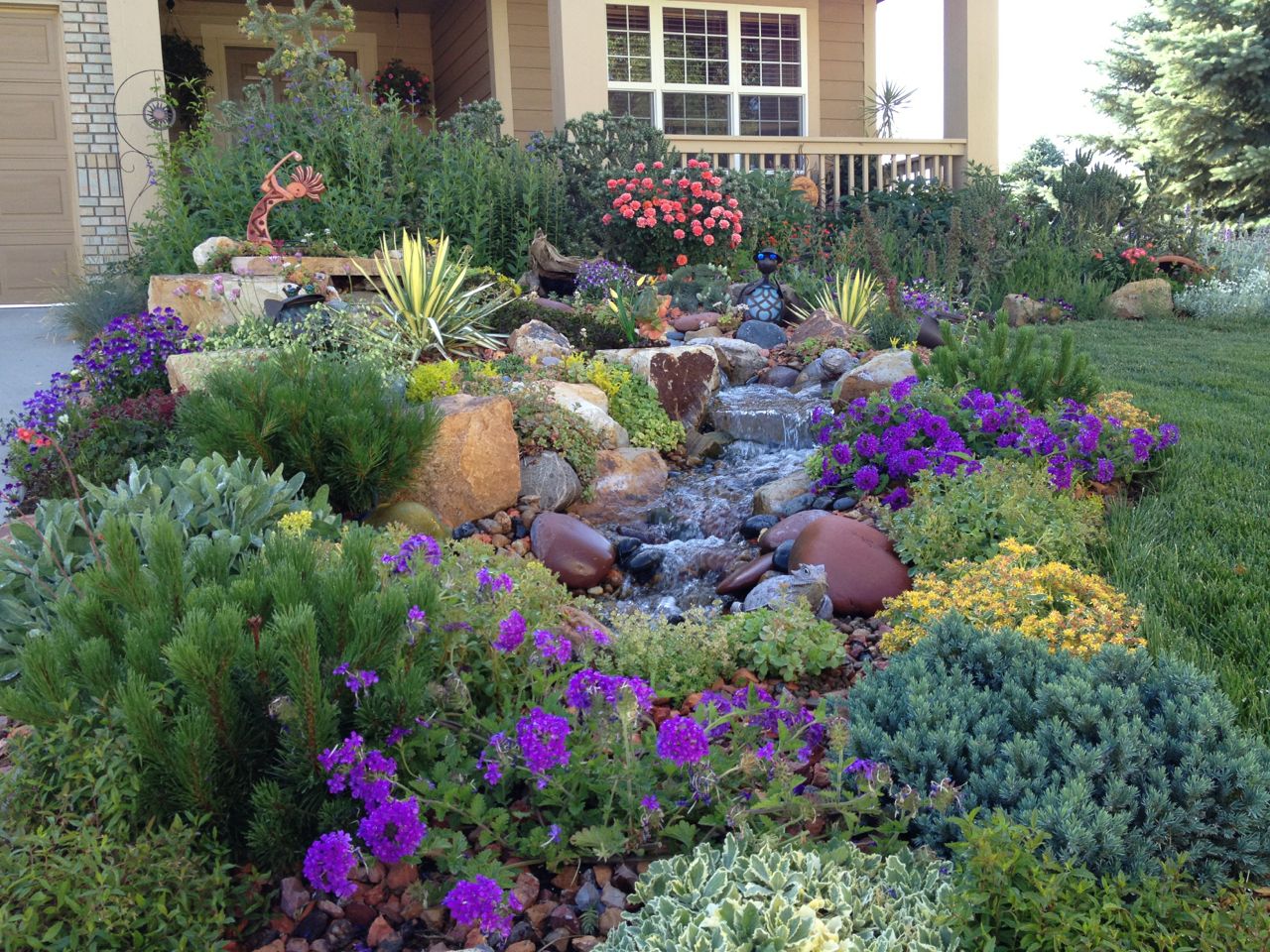
Surprise! Native pants are no more expensive than regular plants. It’s always best to buy locally grown plants from a NOCO nursery, rather than a big box store that ships in stock from other regions. Double-check your zones: Those perennial grasses may look outrageously gorgeous today, but they won’t come back next year if rated to a low of 30 degrees.
In addition to getting better plants from local growers, you’ll also get better information from staff who are knowledgeable, can answer specific questions, and may even have personally nurtured the plants you’re buying. They can describe where to locate each species within your garden for optimal shade, slope, soil depth and other factors. Ask about watering requirements. Also, it’s essential to know what the mature plant is supposed to look like, or you may never know if you got there.
“Most natives won’t necessarily catch your eye [in the store],” says Deryn Davidson, horticulture extension agent for Boulder County. “They won’t be full or blooming yet.”
Be aware of “plant heights, flower and leaf color, and shapes,” says Tyler Fisher, owner of Fisher Landscaping in Greeley. “You need to plan.” Provide enough space between plants to allow branches and stalks to grow outward. Follow the usual directions related to water and sun exposure. Dig holes wider than containers … you know, all the usual steps. It’s easy to get overwhelmed, so start small. It’s better to succeed with a few plants, says CoNPS’s Grant, than to fail with many. It’s perfectly okay to mix in ornamental species with natives. Many are genetically modified to grow in NOCO’s climate.
When you’re ready to break ground, your choices are as vast as the greenhouse’s endless aisles. For help, we asked our experts for their favorite no-fail native plants.
Fisher recommends Prairie Cone Flower (Ratibida columnifera), which blooms summer through fall with yellow blossoms. The Black-eyed Susan (Rudbeckia hirta) likes a combo of sun and shade and provides seeds for birds. Gayfeathers (Liatris punctate) have purple/pink flowers and provide pollen and nectar for bees and butterflies. Fisher advises planting in
optimum sun exposure, because Gayfeathers love the heat and can grow up to 2 feet tall.
Windsor Gardner greenhouse manager Michelle Heronema and the Gulley Greenhouse & Garden Center’s Burleigh both love the Pasque flower (Pulsatilla patens), a lilac, cup-shaped blossom with woolly leaves. One of the first flowers to pop in spring, it’s commonly referred to as prairie crocus.
The Rocky Mountain Columbine (Aquilegia caerula) is a must, says CoNPS’s Grant: “No Colorado garden should be without one.” Hard to argue with her; it’s the official state flower. Grant advises planting this hardy white-and-purple perennial on the east side of your property for better moisture and cooler temps. Her personal favorite is the Rocky Mountain Penstemon (Penstemon strictus), with its large, navy flowers bordering on purple. Tall and especially attractive to bumble bees and hummingbirds, it blooms in June. She suggests planting three for ultimate impact.
Not sure what to pick? Try wildflowers. The Front Range is chock-full of gorgeous blooms. We’re not suggesting that you uproot a beauty from the wild and transplant it into your residential garden. That kind of defeats the whole purpose of biodiversity. Heronema advises using wildflower seed mixes to cover areas up to 3,000 square feet. But beware of grand intentions. The aesthetic is not always what you imagined (or saw depicted in a magazine), explains Davidson. Colorado wildflowers are a lovely concept, but they can be messy and contain weeds. While fine to fill empty acres, they shouldn’t be used for container gardening or small plots. In residential backyards, the result may be different from what you dreamed of.
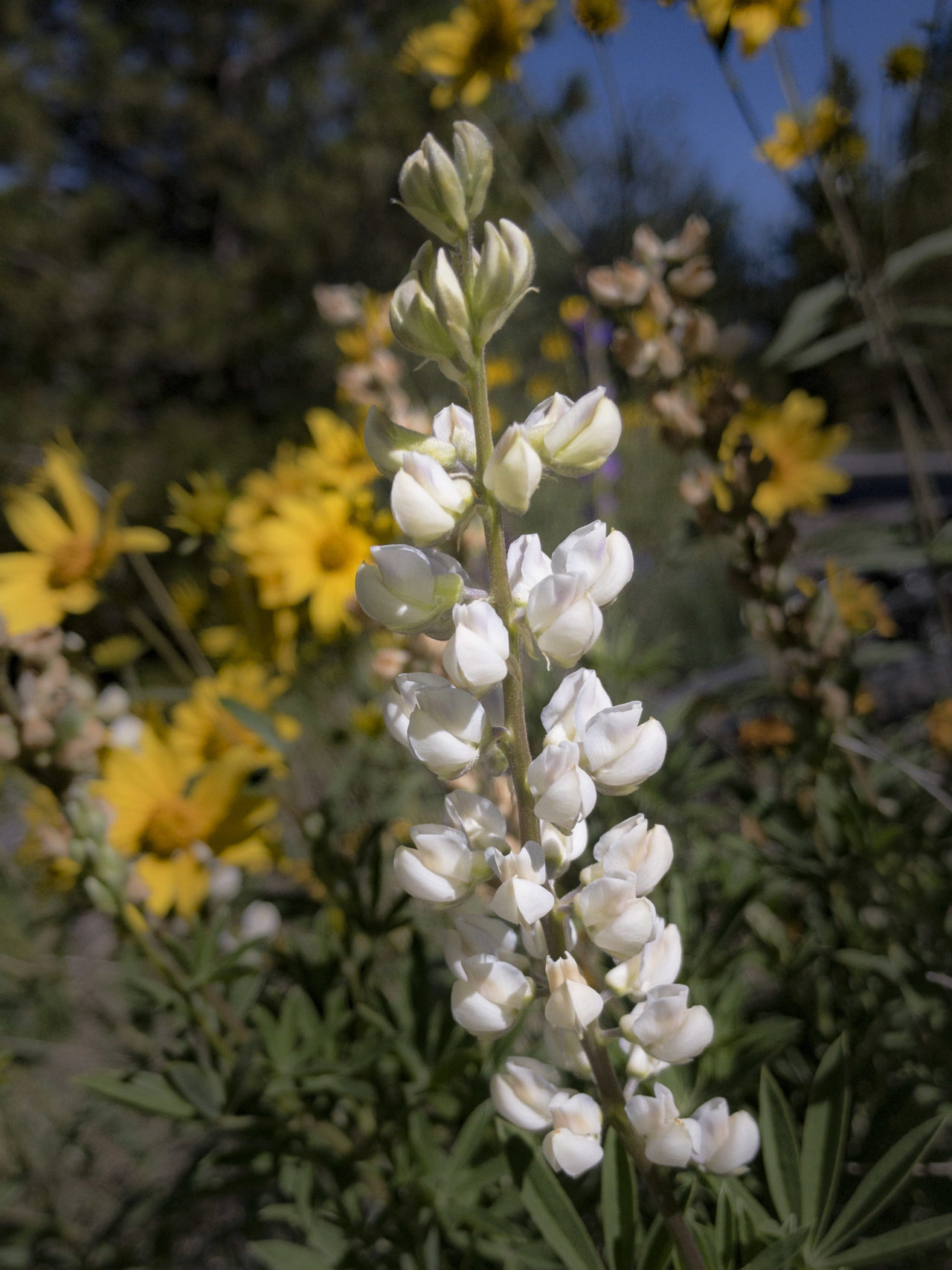
Native plants are
essential to our
environment.
Golden Currant (Ribes aureum) is a fragrant, clove-scented shrub and an April bloomer. The birds love its berries in summer, and it sports colorful leaves in the fall. At full growth it can reach 4 feet high and act as a natural barrier between you and your neighbor’s less thoughtfully designed yard.
Grant recommends Chokecherry (Prunus virginiana melanocarpa) for its lovely white blossoms that mature into green fruit. Birds love it, too, since it plays host to over 100 different insects. Yum.
Burleigh likes Rabbit Brush (Ericameria nauseosa) with its yellow flowers and blue-gray foliage; it can grow to a substantial 5 feet in diameter.
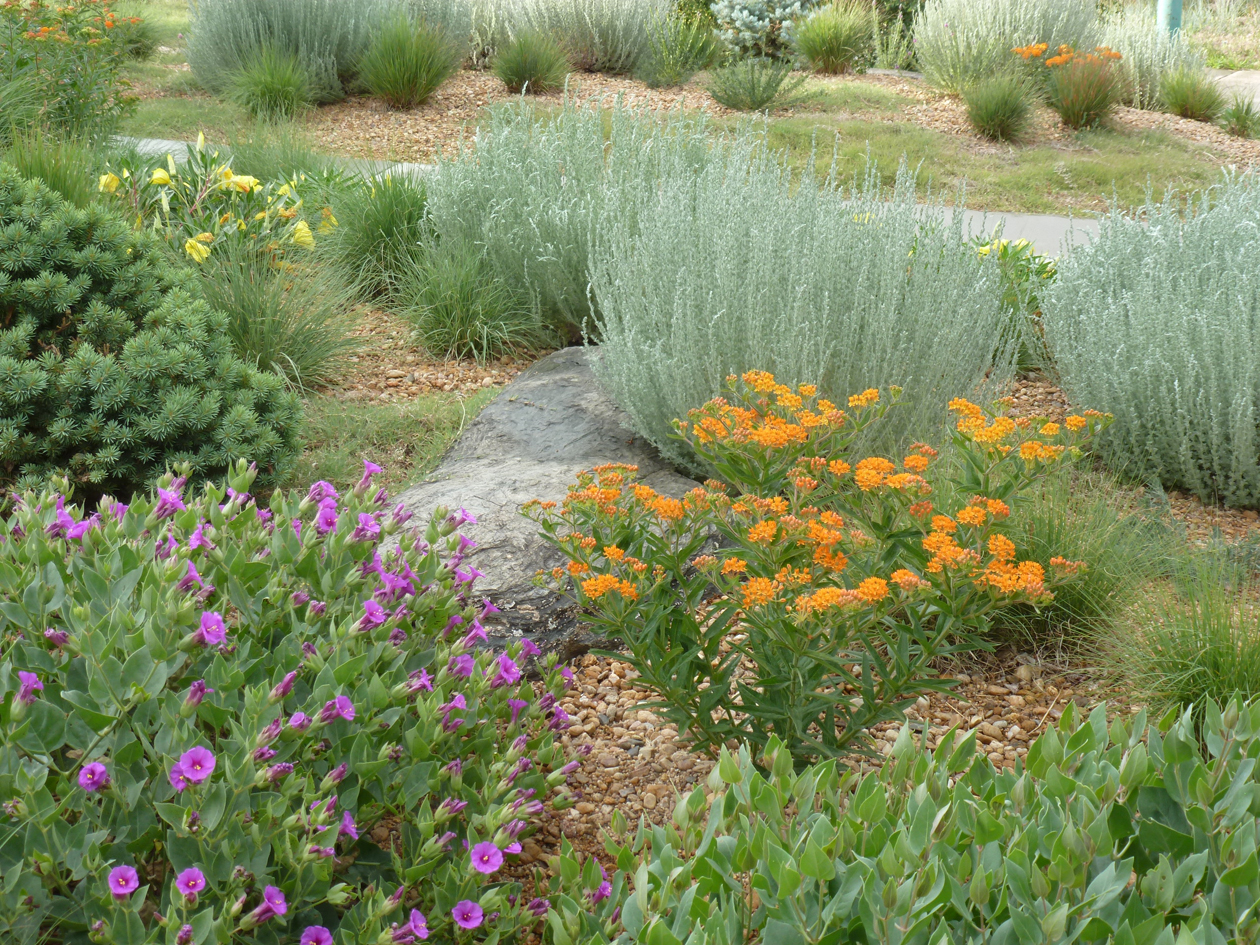
Grasses are extremely adaptable and can grow in even the poorest of soils. They are drought-tolerant and low-maintenance – just cut once a year. The largest varietals can grow up to 5 feet, so make sure you account for that when you plan out your sightlines.
Both Buffalo Grass (Buchloe dactyloides) and Blue Grama (Bouteloua gracilis) can survive tough conditions. They are short, stocky, and love the full sun. Birds flock to them for both seeds and shelter.
Out-of-state varietals do well, says Fisher, but they need more irrigation to thrive. The showy Karl Foerster
(Calamagrostis acutiflora), a hybrid feather reed grass with purplish hints, is popular with Front Range landscapes, yet it originates in Asia and Europe.
Trees
Ponderosa Pine (Pinus ponderosa) and Pinyon Pine (Pinus edulis) are classics. If planting in the fall, make sure the hole is two to three times larger than the rootball, so roots can establish more quickly before temperatures fall. At first they’ll need supplemental watering, but once they’re established you can leave them alone; they’ll do fine. The Gambel Oak (Quercus gambelii) and Rocky Mountain Maple (Acer glabrum) are also smart choices.
And, of course, there’s the Aspen (Populus tremuloides) – the quintessential Colorado species, our state tree – complete with quaking leaves, white bark, and a fall show-stopper of vibrant leaves. When in doubt, the Aspen is a no-brainer, it grows quickly (several feet each year) and it requires relatively little pruning.
If you’re looking to provide some visual interest in your garden bed, nothing says “Colorado” like a big ol’ granite boulder. Just select natural colors to complement your plantings. Colorado flagstone comes in buff (tan) or red. River rock comes in pleasing tan and grays, flattering ornamental grasses. Try using it on patios, pathways and firepits.
Crushed mountain granite is popular for edging. Pavers are nicer to look at than ugly concrete, and they’re more economical in the long run since they’re easier to replace. A gentle reminder: don’t add too many lawn ornaments like gnomes or garden statuary. (Recycle that Design Toscano catalog.) Less is more. Plus, a seven-foot fiberglass Yeti is likely to steal the spotlight away from your new flowers.
Want to go bolder? Reclaim your lawn and go turf-free. Xeriscaping is popular further west, and with water conservation considerations it may not be a bad move for the future. Fisher states it’s becoming more popular in NOCO within the last eight years. But before ripping out front lawns, residents need to consider

Here’s another idea: Go faux. Hey, don’t laugh. Synthetic turf grass no longer looks like the indoor/outdoor carpet stapled to garage stairs. Plus, no watering. No mowing. No fertilizing. No aerating. It’s a big investment but quickly can pay for itself in a few seasons. On average, it runs $15-20 per square foot, which means for a 1,500-square-foot lawn, the price tag can total more than $25,000. But hold on: Subtract the cost of regular lawn care, plus watering, and it could be paid off in… (punching buttons on calculator … wait for it…) 6 to 8 years. Yowsa! And the lawn will always look perfect. Always. Just try explaining it to the neighbors come winter.
There’s a lot you can do to make your property yodel “Colorado.” It’s up to you how much to dive in. All our experts advise starting small, with just one Colorado native plant this spring, and gradually adding to the collection. But besides the inherent beauty of an aesthetically pleasing garden, there’s something bigger at stake: our unique ecosystem. And the bees will thank you.
Additional resources:
For some no-nonsense, hands-on education, consider the Colorado Native Plant Master program at CSU Extension to identify local flora and gain an understanding of uses and misuses. The 12-hour course is broken down into three sections: botanical characteristics, ecological relationship and human uses. See www.conativeplantmaster.colostate.edu for an application.
For posts regarding everything from chicken aliments to wood-boring insects, check out CSU Extension for handy-dandy guides. Specifically: Native Grasses for Colorado Landscapes, Native Plant Reference List, and Native Herbaceous Perennials for Colorado Landscapes. www.extension.colostate.edu/docs/pubs/native
For all-things-Colorado-plants, here’s a one-stop-shop. The Colorado Native Plant Society website lists workshops, volunteer activities, field trips and resources for educators at www.conps.org. Consider joining this nonprofit for $25 per individual or $35 per family and get reduced rates for events.
The High Plains Environmental Center in Loveland, www.suburbitat.org, offers community outreach programs, on-site demonstration gardens and a nursery of native plants. Their e-newsletter describes (in great detail) a native plant-of-the-month.

